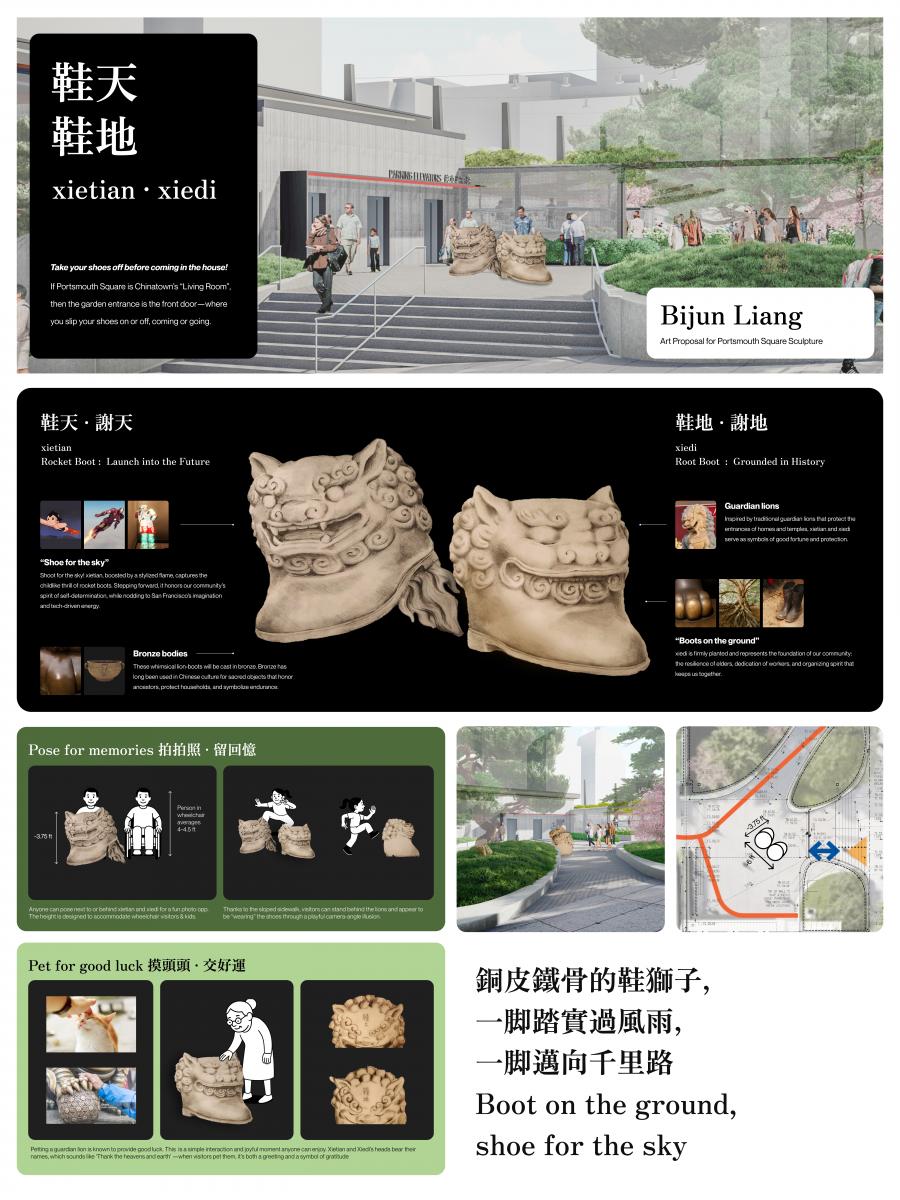
鞋天鞋地 (xietian xiedi) is an interactive installation featuring a pair of bronze guardian lions shaped like boots. One lies firmly grounded—stable and peaceful. The other lifts off like a rocket, excitedly pointing toward what’s possible. Together, they honor where we come from and imagine where we’re going.
For generations, people in this neighborhood have been on the move—physically, economically, socially—finding ways to build a life with what they had. These boots carry that spirit: grounded and determined, always in motion.
The name 鞋天鞋地 plays on 謝天謝地 (xietian xiedi), meaning “thank heavens and earth.” It adds a layer of gratitude for those who walked before us, and blessings for those still to come.
These boots are made for the garden entrance. As my mom would say, “Take your shoes off before coming in the house!” If Portsmouth Square is Chinatown’s “living room”, then the garden entrance is the front door—where family and friends slip shoes on or off, coming or going.
Hopes for the community
I immigrated to San Francisco Chinatown with my single mom when I was five and have been rooted here ever since. Decades later, my family still lives and works in the neighborhood, and my art is shaped by the joy and resilience I see here every day.
This piece is personal… not just my story, but one perhaps shared by many families in Chinatown. We simply moved forward, one step at a time. xietian xiedi is positioned the same way—one boot grounded, the other ready to take the next step. Chinatown has always been a place where people rebuild and keep going, even in the face of uncertainty.
I made xietian xiedi interactive so that people are at the heart of the piece. The boots are meant to be pet for good luck, played with, even dressed up during festivals. I hope they spark joy and invite connection for a community that never stops moving.
Like guardian lions, they’re here to bring good fortune—and maybe a little fun, too.
View a larger image of 鞋天鞋地 (xietian xiedi).
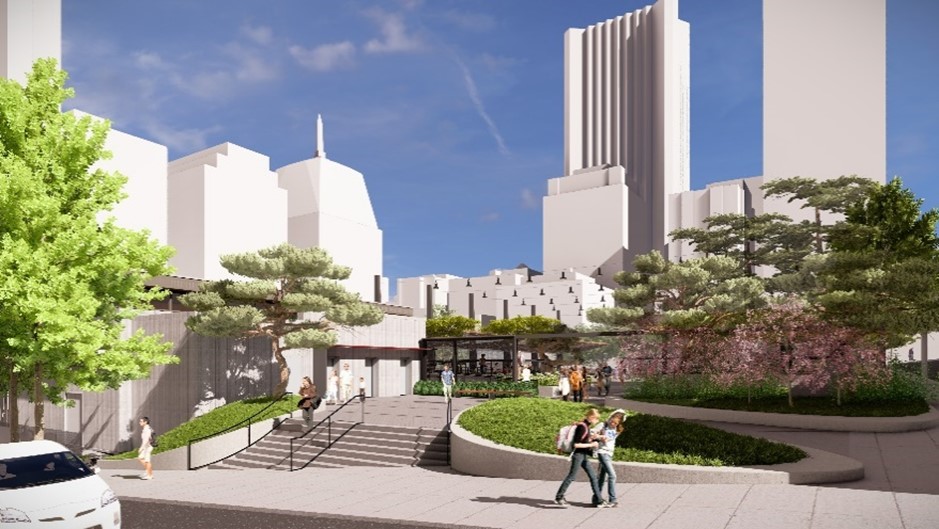
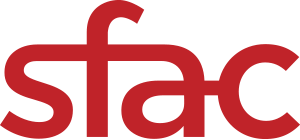
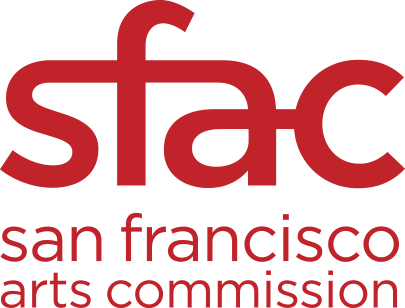

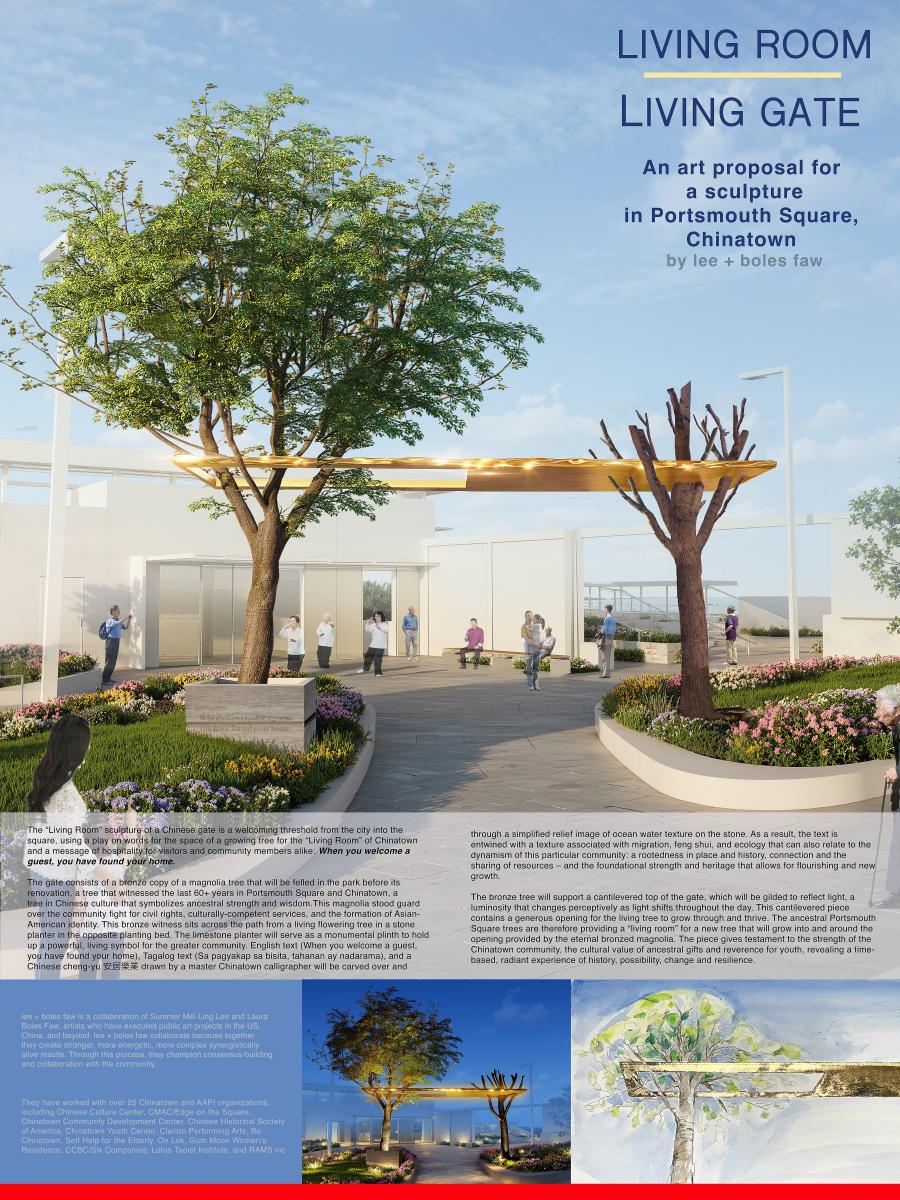 “When you welcome a guest, you have found your home.”
“When you welcome a guest, you have found your home.”
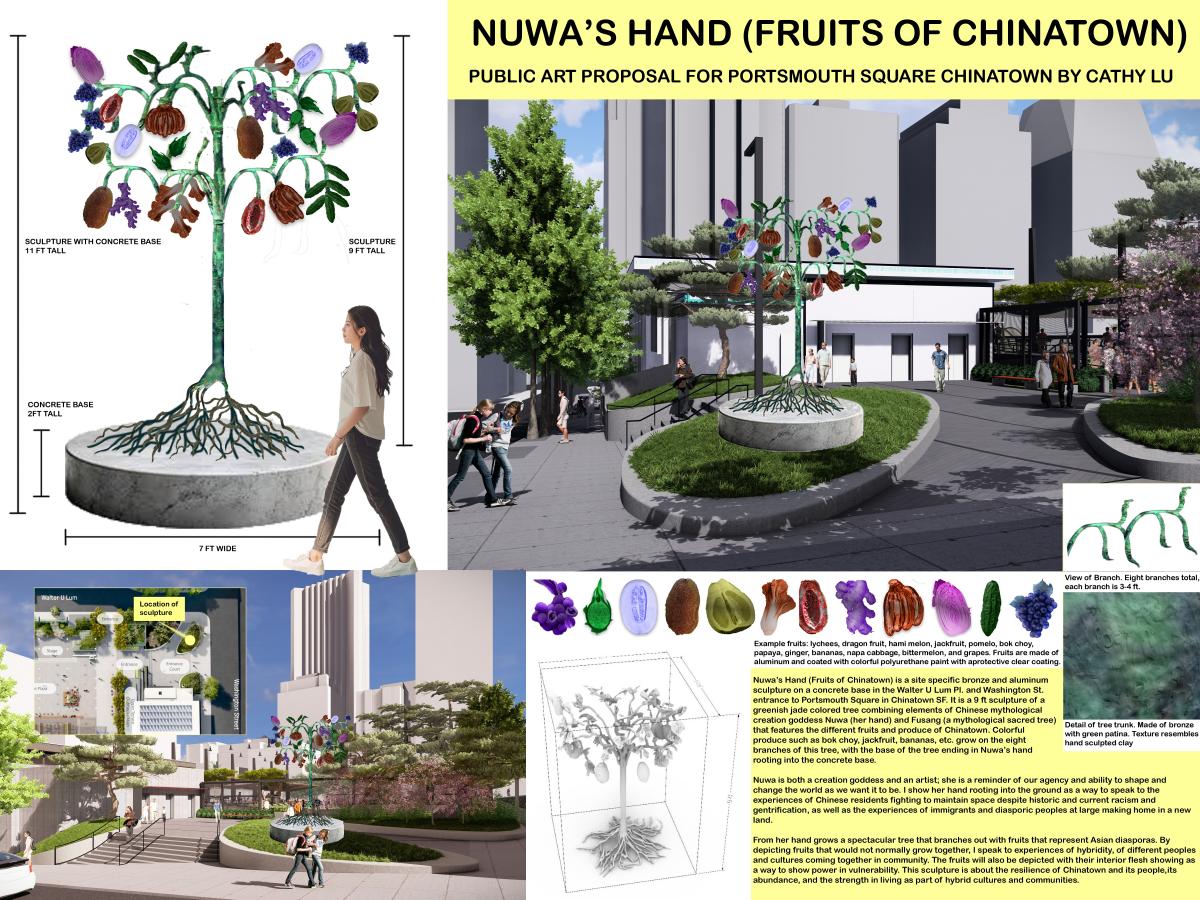 Nuwa’s Hand (Fruits of Chinatown) is a site-specific bronze and aluminum sculpture on a concrete base in the Walter U Lum Pl. and Washington St. entrance to Portsmouth Square in Chinatown SF. It is a 9 ft sculpture of a greenish jade colored tree combining elements of Chinese mythological creation goddess Nuwa 女媧 (her hand) and Fusang 扶桑 (a mythological sacred tree) that features the different fruits and produce of SF Chinatown. Colorful produce such as bok choy, jackfruit, bananas, etc. grow on the eight branches of this tree, with the base of the tree ending in Nuwa’s hand rooting into the ground. The concrete base is 2 ft tall, making the sculpture with the base 11 ft tall. The tree branches are 7 ft wide.
Nuwa’s Hand (Fruits of Chinatown) is a site-specific bronze and aluminum sculpture on a concrete base in the Walter U Lum Pl. and Washington St. entrance to Portsmouth Square in Chinatown SF. It is a 9 ft sculpture of a greenish jade colored tree combining elements of Chinese mythological creation goddess Nuwa 女媧 (her hand) and Fusang 扶桑 (a mythological sacred tree) that features the different fruits and produce of SF Chinatown. Colorful produce such as bok choy, jackfruit, bananas, etc. grow on the eight branches of this tree, with the base of the tree ending in Nuwa’s hand rooting into the ground. The concrete base is 2 ft tall, making the sculpture with the base 11 ft tall. The tree branches are 7 ft wide.
Opportunity For Public Comment
Please take a few minutes to review these artwork proposals and provide feedback. The proposals are available online at www.sfartscommission.org/calendar/proposal-displays, or accessed by the QR Code below, where you can leave feedback in the public comment form. Comments may also be submitted via email to sfacpublicartcomment@sfgov.org by Monday, July 21 at 5:00 p.m. PST.
Public comments will be considered by the Review Panel as part of the Final Review Panel meeting where the Panel will recommend one proposal for implementation. Please note that public comments do not constitute a vote.
The Final Review Panel meeting will take place remotely the week of August 4, 2025. All Artist Review Panel meetings are open to the public. An agenda for the meeting will be posted 72 hours in advance of the meeting on SFAC’s website under the Public Meeting section: www.sfartscommission.org